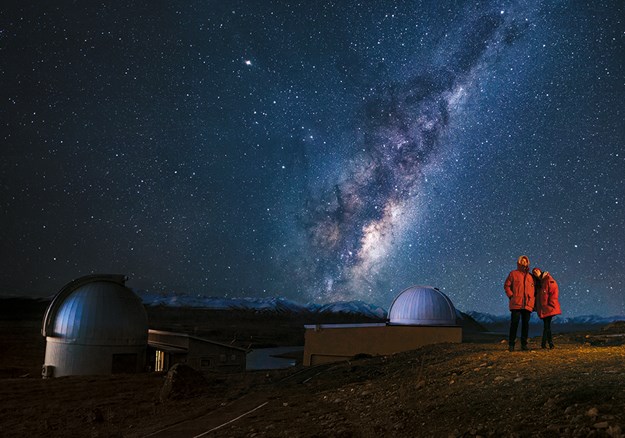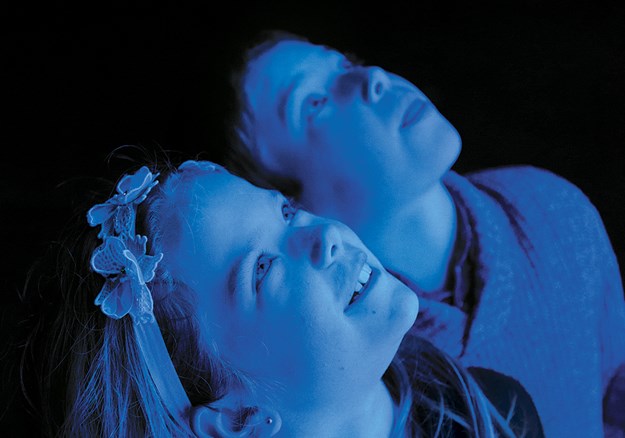The festival of Matariki – the Maori New Year – is gaining momentum, and this year there will be celebrations across the country from mid-June to late July. Jacqui Gibson has tips on where to park up to get the most out of it.
Communities across New Zealand are gearing up to make this year the biggest, most exciting Matariki yet.
That’s according to Ngai Tahu senior advisor Victoria Campbell – one of the organisers behind the inaugural Matariki Mackenzie Festival.
The region, in the centre of the South Island, is home to the world’s largest gold status International Dark Sky Reserve, making it the perfect place to enjoy the celestial celebration, she says.
This year’s Matariki Mackenzie Festival will be held from Friday 2 July to Sunday 4 July, featuring stargazing tours, educational hui and a special sunrise event at the University of Canterbury Mt John Observatory/Otehiwai.
 |
|
Mt John observatory in Tekapo
|
“This year’s event is about creating a really strong foundation for the future,” says Victoria. “We’ve workshopped with the community. The overwhelming feedback is that we want to build an authentic and inclusive festival, involving all aspects of the community. So this year we’re working hard to increase residents’ knowledge of Mataraki, and working with schools and mana whenua to create a schedule of events that visitors can come and enjoy.”
Mackenzie resident Kaye Pardekooper, of Mt Cook Lakeside Retreat at Lake Pukaki, is taking part in the festival by hosting a nine-course dinner, representing the nine main stars in the Matariki constellation. A speaker will talk about the cultural importance of Matariki, and explain its connections to the planting calendar and feasting.
The Wairarapa, meanwhile, will run events such as stargazing tours with freelance guide Becky Bateman, and a major Matariki-themed astrophotography exhibition at Aratoi, the Wairarapa Museum of Art and History.
Piripi Smith is a Napier astronomy expert and founder of Atea a Rangi Star Compass, a dramatic circle of pou (posts) representing the points of the compass, installed at Waitangi Regional Park. He is looking forward to hosting a week of events at the site from Monday 21 to Friday 25 June. He plans to welcome people at 6am that week, and guide them on how to see Matariki as the sun rises.
“The Matariki constellation is just one sign of the Maori New Year,” he says. “I like to point out all the other tohu or signs people can see in the dawn sky. I also like to take some time to explain concepts related to Matariki – like its relationship to farewelling loved ones who’ve passed that year, and seasonal planting.”
In Hawke’s Bay, tour guide and historian Robert MacDonald, of Waimarama Maori Tours, says his family’s Hakikino Conservation Reserve site in Heretaunga is another ideal location to enjoy the event this year. He plans to run early-morning Matariki-themed tours in the first weekend of July.
“Winter is a wonderful time of year for stargazing in general. Matariki makes it an even more special time to travel somewhere new and to experience it through the eyes of local iwi. There’s so much to it – I remember the food my mother would make and gift to others at this time of year. I remember how we’d take time to remember those who’d passed.”
Main centres such as Auckland, Wellington, Christchurch and Dunedin all have Matariki events planned. In Wellington, for example, the city’s main event, Matariki ki Poneke, will run from Friday 2 July to Saturday 10 July. Featuring a range of fire, food and storytelling events, it will finish with a fireworks display on Wellington Harbour.
 |
|
Christchurch is hosting a new light festival called Tirama Mai
|
A new light festival called Tirama Mai is scheduled to take place in Christchurch and New Brighton from Friday 25 June until Saturday 10 July. Christchurch City Council Events and Arts Manager Tanya Cokojic says lighting events are popular with citysiders.
“Tirama Mai, meaning to illuminate or bring light, is the first time we have held a lighting event specifically to coincide with Matariki. We want it to grow to become a highly collaborative festival, with mana whenua guiding cultural elements and design.”
Residents and visitors to the city will be able to explore the lighting trails from 6pm to 11pm every night. Installations will be located around The Arts Centre, Christchurch Art Gallery, Worcester Boulevard, Victoria Square, Otakaro Avon River Precinct, New Regent Street and New Brighton.
Panels telling the story of Matariki will be erected throughout the central city in June. Tirama Mai will wrap up with a fireworks display on Saturday 10 July in New Brighton.
 |
|
The best time to see Matariki is just before sunrise around mid-June
|
AN EVOLVING EVENT
Waikato university professor Rangianehu (Rangi) Matamua, an indigenous studies and astronomy expert, published Matariki – the star of the year in 2017. The book explains Matariki, outlining why Maori observed the occasion, as well as how and when it was observed.
Last year, he won the 2020 Callaghan Medal for his outstanding contribution to science communication. Today he chairs the Matariki Advisory Group, a team of seven experts advising the Government on how and when to celebrate Matariki as a public holiday from 2022.
He’s chuffed Matariki is being embraced, not just by Maori communities but by schools, city councils and New Zealanders generally.
“Thirty years ago, even 20 years ago, hardly anyone knew about it.”
“Now it’s becoming part of our evolving national identity. For many of us, it’s an opportunity to express something that’s unique to who we are in the world. It’s a chance for people to come together, be connected and to feel a sense of togetherness and unity.”
-(1).jpg) |
|
The stars of Matariki
|
WHAT IS MATARIKI?
Matariki is a cluster of stars that rise in June or July during winter. They represent the beginning of a new year according to Maori. Matariki is celebrated by iwi in different ways. Overall, it is a time for remembrance, reflection, hope, preparation and celebration.
HOW MANY STARS SHOULD I LOOK FOR?
Matariki features nine stars (though many iwi record more or fewer stars). Each one carries different significance, such as remembrance of those who’ve passed during the year, or a celebration of food.
WHEN CAN I SEE IT?
The best time to see it is just before sunrise, any time from mid-June.
WHAT IS MATARIKI’S EARLY HISTORY?
According to Professor Rangi Matamua, Matariki was among a select group of stars used by early navigators to travel throughout Polynesia.
WHAT’S HAPPENING NEXT YEAR?
For the first time, Matariki will be a public holiday, on Friday, 24 June 2022.
FIND OUT MORE
- Book to go stargazing in Takapo/Tekapo with the Dark Sky Project, at darkskyproject.co.nz
- Reserve a seat at Mt Cook Lakeside Retreat’s Matariki dinner online, at mtcookretreat.nz
- Learn about the stars from the comfort of your own motorhome with Becky Bateman. Book online at underthestars.co.nz
- Get up early and join Piripi Smith at Atea a Rangi Star Compass in Napier. Learn more at atea.nz
- Book a Matariki tour with Waimarama Maori Tours online, at waimaramamaori.co.nz
- Keep updated on what Wellington has planned, at matarikiwellington.org
- Get the details on Christchurch’s Tirama Mai festival, at ccc.govt.nz/news-and-events/whats-on






